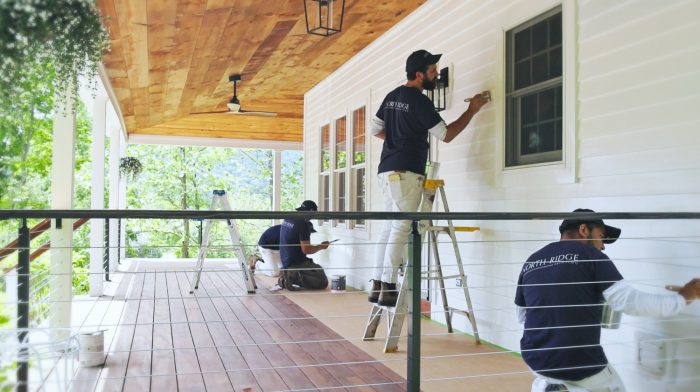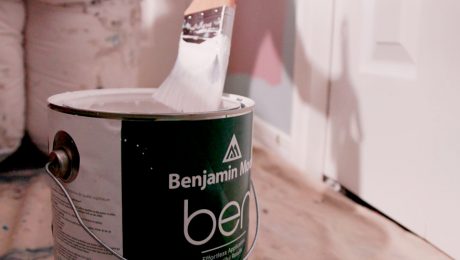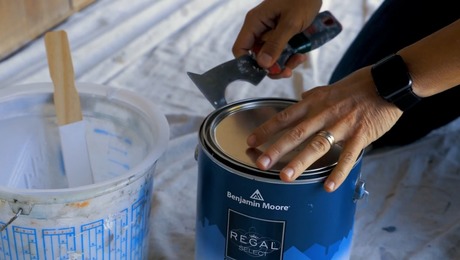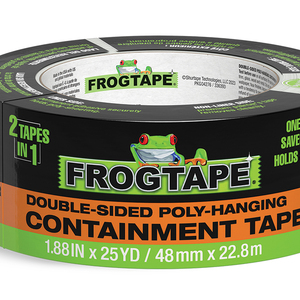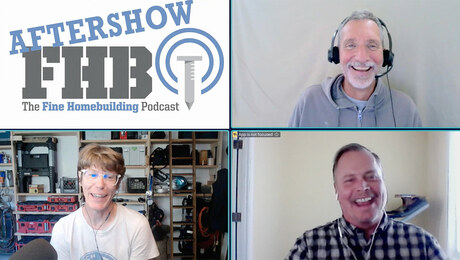Primer to Block and Stop Tannin Bleed
Spot priming with INSL-X Block Out conceals bleed-through, helping to achieve a unified surface ready for the topcoat.
Sponsored by Benjamin Moore
Tyler Irish of North Ridge Painting knows the ins and outs of a successful paint job; it all starts with the prep work. Part of that prep includes using a high-quality primer, especially when working with factory-primed cedar clapboards with heavy tannin bleed like he experienced on this job. To stop tannin bleed-through, he uses Benjamin Moore’s INSL-X Block Out Primer to get the exterior ready for its new topcoat.
In this video, Tyler overviews areas that commonly need spot-priming to limit tannin bleed-through in addition to sharing his experience growing as a painter and his appreciation for the detail-oriented work that comes along with it.
Here’s the transcript:
80% of what we do as painters is prep. Some people find it very tedious, but it’s an important aspect of what we do. I think day two on site, my uncle looked at me and said, “You’re a lifer. You’re going to be doing this for the rest of your life.” I didn’t really appreciate the trade back then, but as time went on, I fell in love with it.
Originally I was more of a production painter, it was just kind of an industry term, “blow and go.” Get in, get it done, get out. So I think when I started to appreciate it was when I got into the finer aspects of it. When I could look at something at the end of a job and be proud of it and find a rewarding aspect to it. I am a lifer. I’m in this.
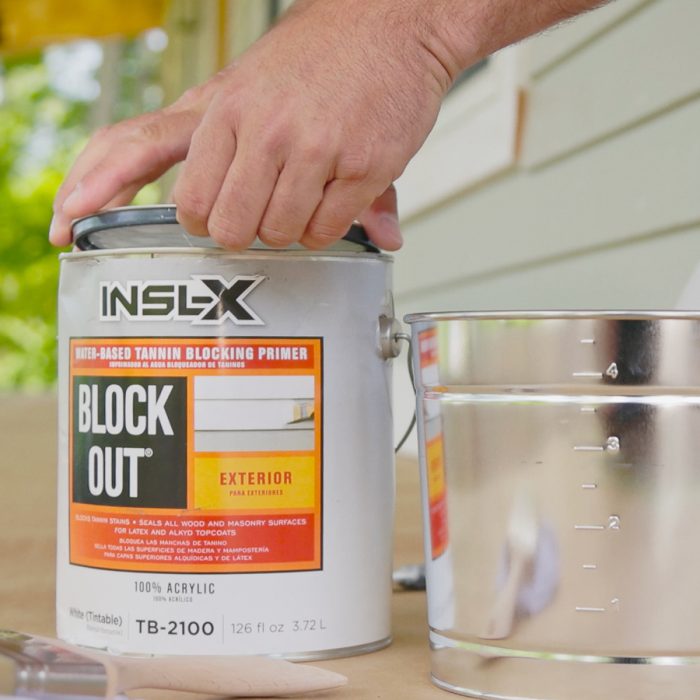
When you’re sanding preprimed product like this, our goal is not to burn through the primer. So we’re going to use a higher-grit sandpaper. It’s basically a finishing sanding.
We’re just going to go through to scuff it. We say it gives it “bite” or “tooth”; it gives it a little bit of abrasion so that when the finished paint goes on or the spot primer goes on, it can hold onto that lumber.
Tannin-blocking primer is important because if you don’t do this within days or weeks, you’re going to have tannin bleed coming through your finished paint, especially light-color paint.
On this house today, we’re using Benjamin Moore’s AURA® Exterior in White Dove. And if we weren’t to do spot-priming, I’d say within days we would have red or yellow streaks coming through the lumber. On the nail holes, we might have little brown or red rings around the nail holes, bleeding through. INSL-X Block Out primer is going to cover all the staining, all the tannins in the wood. It’s going to seal that product; it’s even more assurance.
I learned the ropes on Benjamin Moore. It was the first product I used on day one when I started painting. We’re using AURA on this site because it is Benjamin Moore’s premier topcoat exterior product. We know that it’s going to last for a long time. What I like about AURA is its coverage. I know that if we are going over a different color, for example, if this house were maybe a darker shade and we’re trying to move to a lighter shade, AURA has a higher coverage rate than maybe some of the other lines.
I think the thing that makes me most proud to work with the people I work with is their attention to the detail, that they care about the quality. It’s just rewarding. I’m addicted to it. I mean, you’re a finisher, you’re the one who goes behind people. They often say the painter will fix it, and that’s what we do. I tell everyone on my team when I’m training them, we fix all the problems. If joints don’t meet properly, we’re going to correct that. If the walls aren’t smooth, we’re going to skim that out, we’re going to paint that, we’re going to make it beautiful—and it’s nice to know that we’re part of that process.
RELATED STORIES
